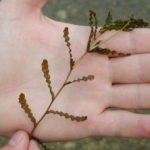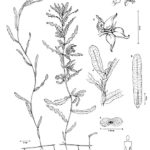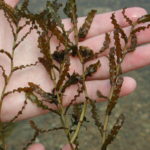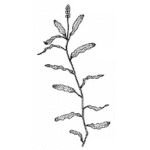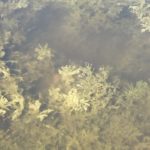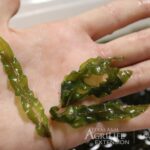Potamogeton crispus
Creative Commons Attribution 3.0 License.
USDA, NRCS. 2018. The PLANTS Database (http://plants.usda.gov, 28 March 2018). National Plant Data Team, Greensboro, NC 27401-4901 USA.
Illustrations courtesy of University of Florida/IFAS Center for Aquatic and Invasive Plants. Used with permission.
What is Curly-leafed Pondweed?
Physical Characteristics
Leaves:
- All submersed
- Bright to dark green, occasionally slightly reddish
- 4 inches long
- 0.39 inches wide
- Peduncles 0.78- 2.75 inches long
Little Leaves:
- 0.2-0.59 inches long
- Upper part frayed
Flowers:
Fruit:
- 0.39-2.75 inches long
- 0.39-0.52 inches wide
Stems:
- Rhizome
- Reddish in color
- Simple
- Branching
- 0.02-0.09 inches wide
Where Does it Grow?
EDDMapS. 2024. Early Detection & Distribution Mapping System. The University of Georgia – Center for Invasive Species and Ecosystem Health. Available online at http://www.eddmaps.org/; last accessed January 17, 2024.
Non-Native
Curly-leafed pondweed is a perennial plant that is native to Europe . Fruits are seldom found. They reproduce from small, “burr-like” vegetative structures that from a the base of some leaves.
Curly-leafed pondweed can be found in farm ponds and streams, often in quiet muddy water.
Is it Invasive?
Curly-leafed pondweed is non-native to the United States, and it can be an aggressive invader that can cover large portions of ponds.
This plant is not native to North America and should not be introduced into new water bodies and should be treated with herbicide when present.
